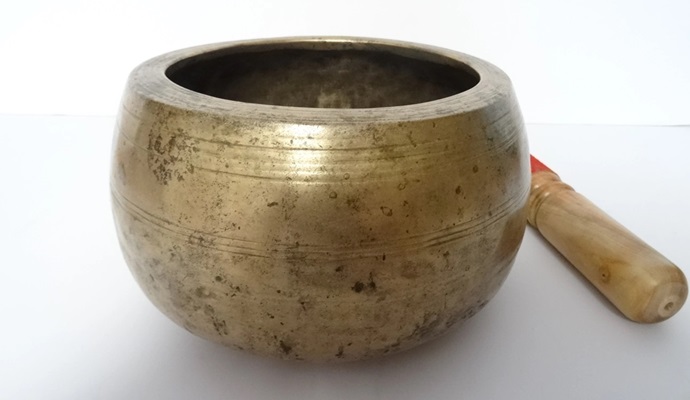The Mani Singing Bowl is one of the 10 Types of Singing Bowls. Mani Singing Bowls are renowned for their distinct physical presence and resonant, powerful tones. Often compared to the shape of an elephant’s foot or a traditional begging bowl, these bowls feature a unique design with a wide, inward-facing lip that creates a captivating auditory experience. Typically, their diameters range from 4 to 9 inches (10 to 23 cm), and they produce notes within the 4th and 5th octaves, making their sound both deep and melodious. The uniformity in their conical form is quite striking, as it remains consistent across different bowls, contributing to their easily recognizable silhouette.

The substantial and heavy nature of Mani Singing Bowls is another key characteristic, with flat bottoms and walls that taper towards the mouth, giving them a sturdy and robust feel. Their wide, inward-facing lips and bulbous bellies, which are often broader than their bases or rims, add to their distinct appearance. In terms of decoration, Mani bowls are relatively simple, featuring a grooved lip, small concentric circles on the interior floor, and a few bands of incised lines near the outer rim and sometimes around the mid-point of the belly. The smooth surfaces inside and out contribute to their refined and elegant look.
Despite their simplicity in design, Mani Singing Bowls are highly valued for their unique sound quality and the sense of calm they bring to their users. Unlike other types of singing bowls, Mani bowls do not produce talking or fountain effects, and they rarely bear any inscriptions. Their beauty lies in their straightforward form and the powerful, resonant sound they emit, which can be both grounding and uplifting. Whether used for meditation, sound therapy, or simply as a unique decorative piece, Mani Singing Bowls offer a timeless allure that captures both the eye and the ear.



